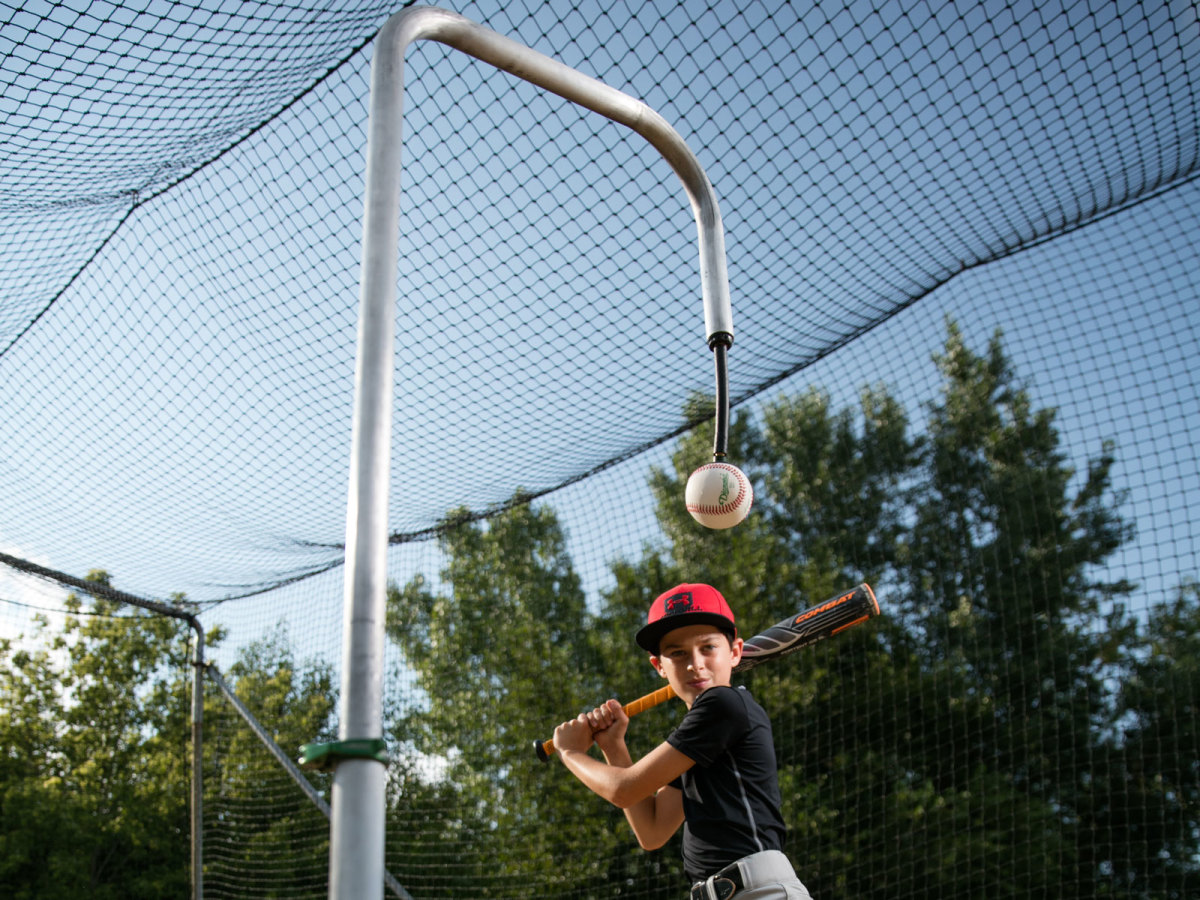The 'Magic Tee' Is Here for the New Generation of Fly Ball Hitters

Eight years ago, Ryan McGuire, a former Iowa State coach was teaching his four-year-old how to swing a bat. His son had a toy that hung a ball on a string, allowing McGuire to teach the tyke to hit the lower half of the ball, something McGuire had trouble doing on the traditional tee with his college players.
The Statcast era in baseball has ushered in what some have called the “fly ball revolution.” New age batting analysis has made swinging for the fences fashionable. To do so means hitting the ball from below, contradicting the old coaching mantra to “get on top of the ball.”
“The genie’s out of the bottle,” Doug Latta, the California-based swing instructor credited with starting the fly ball trend, told the Washington Post last year. “The key will be: ‘Do we really know how to instruct this?’ It’s not going away.”
McGuire’s goal—for his teams and his toddler—was the same as Latta’s. For players to hit home runs, the bat needs to make strong contact on the bottom half of the ball to give it the necessary backspin to clear the fence. That’s difficult to practice if the bat hits the tee with every practice swing. The feedback the hitter gets from the tee interferes.
While the concept of an inverted baseball tee isn’t new, nobody’s been able to engineer something that allows the hitter to see (and hit) the lower half of the ball while retaining the simplicity and durability that a traditional tee has.
After seeing his son’s batting toy in action, McGuire, 43, was convinced there was a better way. He teamed up with his workout buddy, Rob Kibbe, a mechanical engineer, to make it happen.
It took four different versions—the first used a shop-vac and an engine hoist—and then they had the Magic Tee: an inverted baseball tee that uses suction to hold the ball from the top, by the smallest surface area possible.
Once they had that, Kibbe, 42, brought in friends and fellow baseball dads Nathan Haila and Sam Schill to help launch the business side of the product. The Magic Tee’s Kickstarter campaign, with a goal of $70,000, launched Tuesday. They plan to have products available to their initial supporters by next year.
All four men have kids in baseball or softball. The goal was simple: “Let’s just make a better tee for dads like us who are trying to teach the game of baseball and softball to our kids,” said Schill. And if they’re going to be competitive players these days, they better be able to hit homers.

For some, like former Texas A&M assistant coach Jim Lawler, the Magic Tee is more a much-needed addition to the coaching arsenal than a revolution. “I can see a hitter using both depending on what he wants to work on that day,” said Lawler.
Still, with over 30 years of coaching under his belt, 66-year-old Lawler is enthusiastic about the device.
“It allows home run hitters to get the launch angle they’re looking for,” said Lawler. “The biggest thing for me, and all of us coaches, we wanna have backspin on the ball and this allows for that. It frees up that concept.”
Steven Lawrence, a freshman outfielder at Wartburg College in Waverly, Iowa, was one of the first to test out the latest Magic Tee prototype. “It feels like you’re not hitting off a tee really,” said Lawrence, 19. “Like you’re in the game.”
While the Magic Tee has a long way to go before it’s proven itself to the baseball world, the response so far from players, parents and coaches (including at the American Baseball Coaches Association convention last month in Indianapolis, where Lawler met the Magic Tee’s developers) has been largely positive. By the end of day one, Magic Tee had over 50 backers and more than $11,000 in pledges.
McGuire’s only worry is that the baseball community might be reticent to move away from tradition. “The baseball industry can be slow to change, and this is a pretty big departure from what the traditional tee is,” he said.
Whether or not the fly ball revolution is a passing trend, McGuire, Haila, Kibbe and Schill are convinced that their “hobby project gone wild” is a game changer for anyone wanting to improve their hitting technique.
“My goal is that my son never goes back to the traditional tee—that he starts his learning process with the Magic Tee,” says Schill, 36, whose youngest is just six years old.
With twelve kids total, the Iowa-based inventors joke that they have nearly an entire baseball team between them. If Latta’s fly ball revolution sticks, they could have a team of all-stars on their hands.
